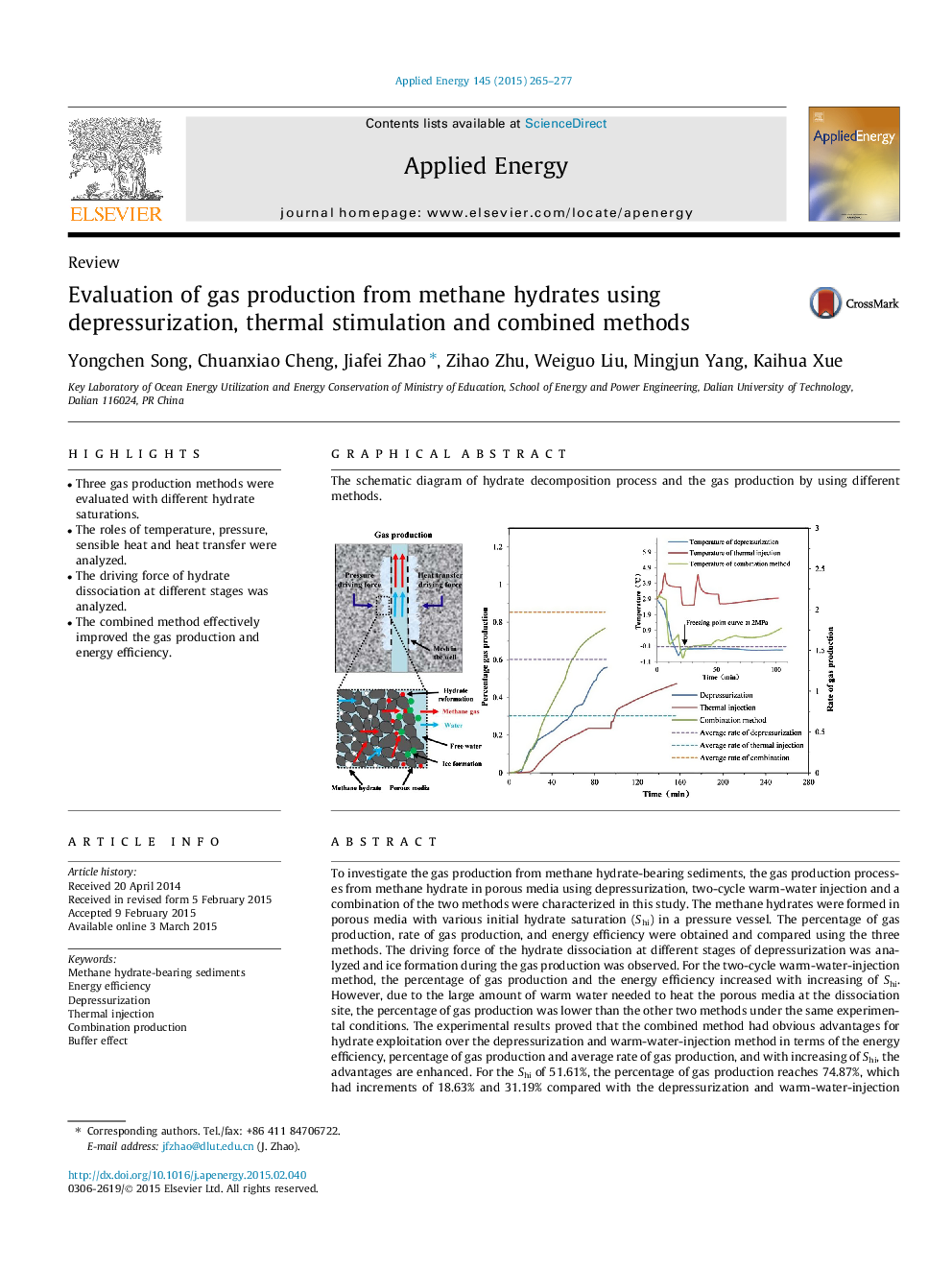| کد مقاله | کد نشریه | سال انتشار | مقاله انگلیسی | نسخه تمام متن |
|---|---|---|---|---|
| 242557 | 501877 | 2015 | 13 صفحه PDF | دانلود رایگان |
• Three gas production methods were evaluated with different hydrate saturations.
• The roles of temperature, pressure, sensible heat and heat transfer were analyzed.
• The driving force of hydrate dissociation at different stages was analyzed.
• The combined method effectively improved the gas production and energy efficiency.
To investigate the gas production from methane hydrate-bearing sediments, the gas production processes from methane hydrate in porous media using depressurization, two-cycle warm-water injection and a combination of the two methods were characterized in this study. The methane hydrates were formed in porous media with various initial hydrate saturation (Shi) in a pressure vessel. The percentage of gas production, rate of gas production, and energy efficiency were obtained and compared using the three methods. The driving force of the hydrate dissociation at different stages of depressurization was analyzed and ice formation during the gas production was observed. For the two-cycle warm-water-injection method, the percentage of gas production and the energy efficiency increased with increasing of Shi. However, due to the large amount of warm water needed to heat the porous media at the dissociation site, the percentage of gas production was lower than the other two methods under the same experimental conditions. The experimental results proved that the combined method had obvious advantages for hydrate exploitation over the depressurization and warm-water-injection method in terms of the energy efficiency, percentage of gas production and average rate of gas production, and with increasing of Shi, the advantages are enhanced. For the Shi of 51.61%, the percentage of gas production reaches 74.87%, which had increments of 18.63% and 31.19% compared with the depressurization and warm-water-injection methods. The energy efficiency for the combined method were 31.47, 49.93 and 68.13 for Shi of 31.90%, 41.31% and 51.61%, respectively.
The schematic diagram of hydrate decomposition process and the gas production by using different methods.Figure optionsDownload as PowerPoint slide
Journal: Applied Energy - Volume 145, 1 May 2015, Pages 265–277
